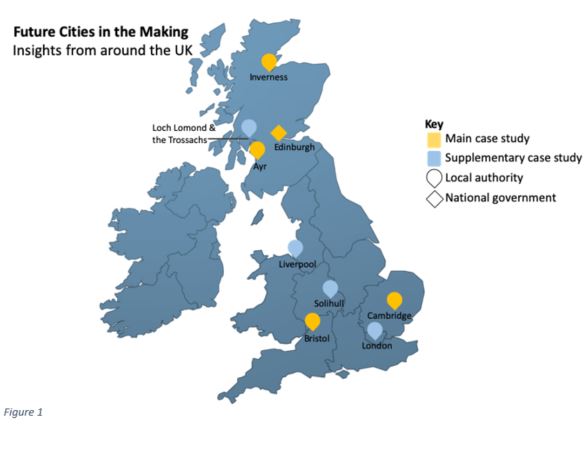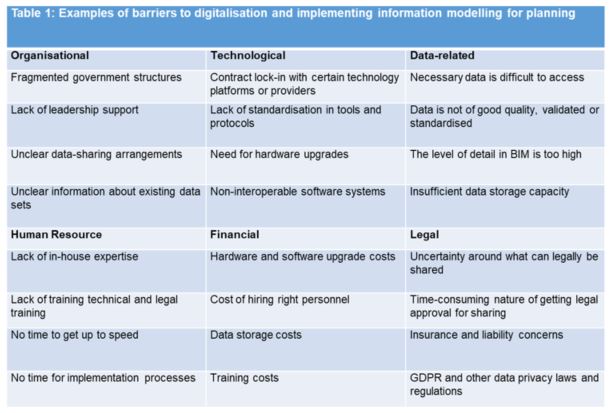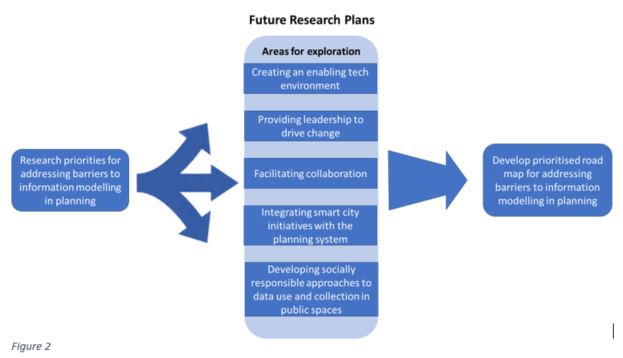
Submitted by Debra Royal on Fri, 13/09/2019 - 14:51
CDBB Week 2019 showcases CDBB’s diverse range of work and engagement with our industry, academic and policy networks. As part of Friday’s #CDBBWeek2019 Digital Roundup, the Centre invited a number of researchers from CDBB funded research networks and early career researchers to shine a light on their projects supporting a digital built Britain.
“It is the breadth of the task and the research questions we need to ask that makes developing the CDBB research agenda such an exciting and challenging proposition. If we are to understand fully how the buildings and infrastructure of the future are going to deliver better services to our citizens, we need to take a truly multidisciplinary approach. We need engineers and architects to work with economists, linguists, social scientists, neuroscientists, psychologists, mathematicians and computer scientists – among others – to understand both the impact of the built environment on how we live our lives and how to design, build, operate and integrate assets that can deliver better outcomes for us all.“ Dr Jennifer Schooling OBE, Chair of the CDBB Research Strategy Advisory Group
Future Cities in the Making: Overcoming barriers to information modelling in socially responsible cities
Exploring opportunities for Information Modelling in planning
Imagine a 3D model of a city that goes beyond showing physical attributes to model traffic, air quality, energy use, employment, and planning requirements. This is the vision we uncovered when we asked planning stakeholders, ranging from local planners to private developers, what information modelling can do to support their work. Information modelling could potentially deliver on their vision; however, although Building Information Modelling (BIM) has been gaining traction in architecture, engineering and construction, research shows that it is not used in the UK for planning.
This project sought to uncover the barriers to and opportunities for information modelling in planning. Our research was structured around three main case studies, including two English local authorities—Bristol and Cambridge—and the devolved nation of Scotland. We also conducted several smaller supplemental case studies (Figure 1). Through more than 40 interviews, policy analyses and a questionnaire, we explored barriers to information modelling in planning in urban, town, and rural settings with different governance structures and planning systems.
Insights on barriers to information modelling
Our research uncovered a number of interrelated barriers to information modelling that fell into one of six categories (Table 1). Our analysis of barriers pointed to four significant implications.
First, we discovered that the barriers to information modelling will also stymie attempts at other forms of digitalisation in local government. Therefore, overcoming these barriers will unlock the path not just to information modelling for planning, but to a more transformative use of digital tools in general.
Second, nearly all the barriers we uncovered are interrelated. For example, through our case studies, we found that organisational barriers, like fragmented governance structures, led to data-related barriers, including data silos, and legal barriers, relating to uncertainty around what information could be shared legally between governments. To overcome barriers, our research suggests that focusing on individual types of barriers will be necessary, but not sufficient. Given how interrelated the barriers are, a joined-up approach that tackles multiple types of barriers at a time will be necessary.
Thirdly, we found a stark division between local planning and smart city planning. In cities that are actively preparing for a digital future, the planning function of local government is separate from the smart city teams. This is surprising, because our analysis showed that both planners and smart city strategists are focused on the same goal: planning a sustainable, efficient and inclusive future. Therefore, local authorities need better integration between spatial planning and planning the digital future of the built environment.
Finally, local governments are not prepared to address the questions that come along with using citizens’ personal data for information modelling. Privacy is a human right, established both in international and domestic law, and privacy protection regimes developed for the Internet of Things are not sufficient to deal with the ethical questions that arise from collecting and using citizen data from the built environment.
Future steps
Our research uncovered appetite in the planning community for a robust information modelling tool, and identified the barriers that must be overcome to enable not just information modelling in planning, but digitalisation in general. Future research is needed to develop a prioritised road map for addressing barriers to information modelling in planning (Figure 2).
We hope to conduct future research, exploring solutions the planning system needs to unlock the power of data from the built environment for the public good.
Dr Franziska Sielker,Lecturer in Planning and Housing, Department of Land Economy, University of Cambridge and CDBB Early Career Researcher, and Amarynth Sichel, Research Assistant at Department of Land Economy, University of Cambridge.



